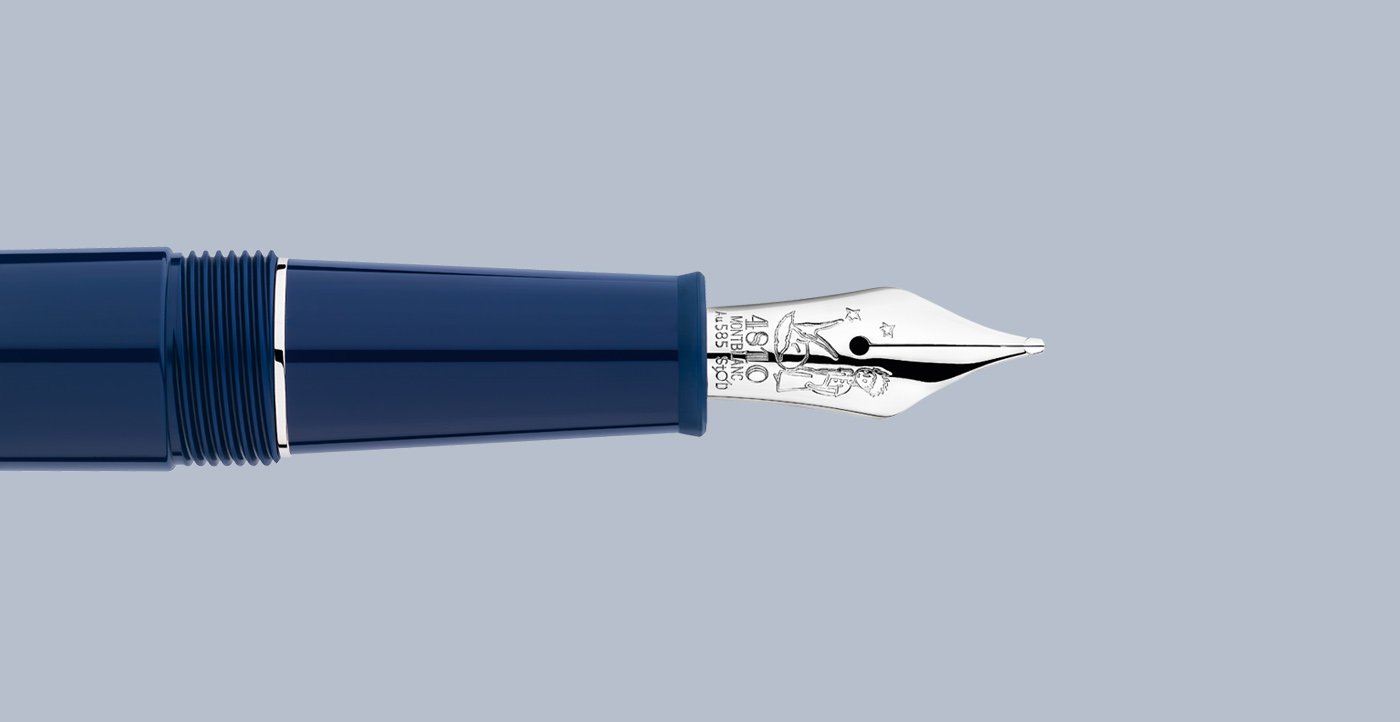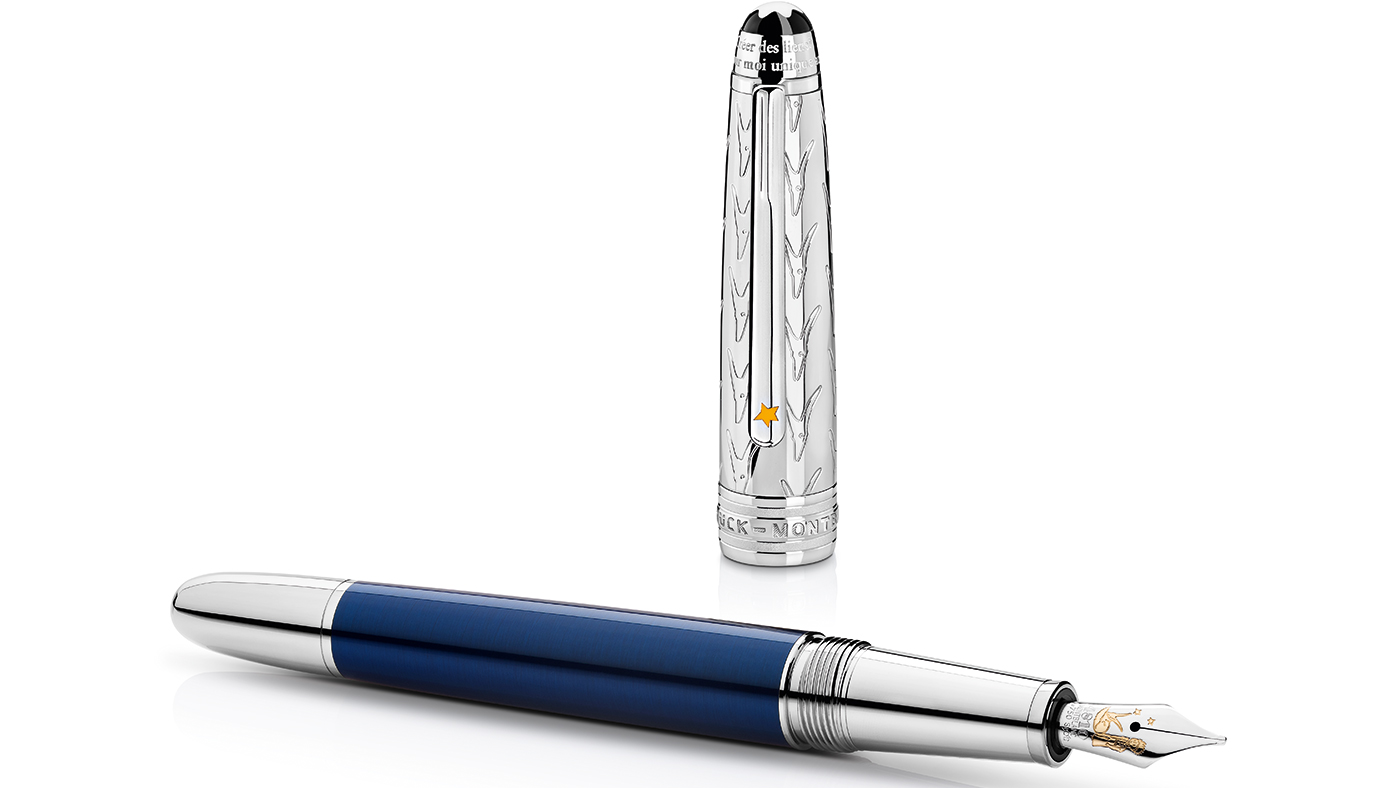Lynn Serfaty: Montblanc Meisterstuck x Le Petit Prince
The brand's head of writing culture describes how Antoine de Saint-Exupery's much-loved novella inspired its latest collection of pens

Antoine de Saint-Exupery joined the French Air Force at the start of the Second World War, and he wrote the story Le Petit Prince after the armistice of June 1940, when the French effectively surrendered to Nazi forces. He moved to the US following the armistice, because he thought it was fundamental for the West to join the war for it to be won.
He was writing at a time when nobody knew what the outcome of the war would be, and the book was first published in the US in 1943, which means it was probably finished in 1942 when Nazi Germany occupied the South of France. While the prospects were quite dark, the book is about hope, love, and friendship, and when you read the story, it's so full of poetry, you don't necessarily understand the emergency with which it was written.
When you read Saint-Exupery's diary about these years, when he's in New York, you realise it was a year of intensity and despair. He knows when he leaves on his last mission with the French Air Force he will probably die, and in April 1943, he wrote in a letter to his wife Consuelo: "I do not leave to die… I have no desire of getting killed, but I accept to fall asleep that way." However, his years in New York were also full of encounters, discoveries and optimism, and this is important, as Le Petit Prince is an act of optimism; it's an act of facing human kind.
The Week
Escape your echo chamber. Get the facts behind the news, plus analysis from multiple perspectives.

Sign up for The Week's Free Newsletters
From our morning news briefing to a weekly Good News Newsletter, get the best of The Week delivered directly to your inbox.
From our morning news briefing to a weekly Good News Newsletter, get the best of The Week delivered directly to your inbox.
The main topic that inspired our new collection of writing instruments is the notion of transmission. The Meisterstuck pen is the most iconic Montblanc writing instrument, and the most gifted one – it's gifted by grandparents and parents to their children but it's also gifted by children to their parents. So it is a transmission object, and this is the theme of Le Petit Prince. When Saint-Exupery wrote the book, it was his testament; it was his last novella and the final message he gave to the world before he got struck over the Mediterranean Sea.

For this collection we chose to focus on the character of the fox, because the fox is the first encounter the Little Prince has on planet Earth. The fox is crucial, because he teaches the Prince what love is. The prince has experienced love, because he falls in love with his rose on his planet, but he doesn't know he's in love until the fox explains about the responsibility that comes with taming something, and about creating bonds – not bonds that will imprison you, but bonds of love that will make you unique and precious. So we used the fox, because we wanted the piece to be about transmission, about friendship and about love.
The cap and barrel of the Meisterstuck Le Petit Prince Special Edition pen are made of night-blue resin – a first for Montblanc – representing the universe around the prince. The milled cap is decorated with a fox face pattern. We also used the quote "Creer des liens?… Tu seras pour moi unique au monde" (meaning, "To establish ties?...To me, you will be unique in all the world") laser-engraved into the crown of the writing instrument. The lacquered star is the exact replica of the Saint-Exupery star, as he has an obvious connection to the star and to the sky because he was a pilot.
The Meisterstuck Le Petit Prince Doue Classique Edition features engravings of the fox pattern on the platinum-coated cap, and on the Meisterstuck Le Petit Prince Solitaire, the fox pattern covers both the cap and barrel.
A free daily email with the biggest news stories of the day – and the best features from TheWeek.com
The magical thing about a pen is that it's a tool that's made for your hand, so there's an intimacy in the gesture of handwriting that you will not find with a standard keyboard, as using computers and machines forces your brain to think in a formatted system. It's interesting to look at what is happening in technology today, as massive investments are being made to get rid of the keyboard and allow people to move from handwriting straight into digital, expressing creativity that can only happen with a physical gesture.
Our pens are very much used as statements, as tools for self-expression, and the inks are increasingly used not for writing, but for drawing and dipping brushes in. I think social media is playing an active role in this, because it's breaking down the boundaries of what traditional writing is, for example structure, syntax, and spelling. It's a world with no boundaries. You can reform words, you can create words, you can mix images and writing, and you can express yourself orally, so the three big categories of communication, writing, oral language and images, are mixing up in a very creative way, and it's having a positive effect.
The idea that writing is a way to act on the world is vital for us. A pen symbolises opportunity, creative expression and unlimited possibilities, which is essentially what the book is saying.
LYNN SERFATY has been head of writing culture at Montblanc for three-and a-half years, managing the writing instrument category, from operations to product development and high-artistry projects. The Meisterstuck Le Petit Prince edition starts from £380 and is available in Montblanc Boutiques and at montblanc.com
-
 ‘Care fractures after birth’
‘Care fractures after birth’instant opinion Opinion, comment and editorials of the day
-
 Shots fired in the US-EU war over digital censorship
Shots fired in the US-EU war over digital censorshipIN THE SPOTLIGHT The Trump administration risks opening a dangerous new front in the battle of real-world consequences for online action
-
 What will the US economy look like in 2026?
What will the US economy look like in 2026?Today’s Big Question Wall Street is bullish, but uncertain